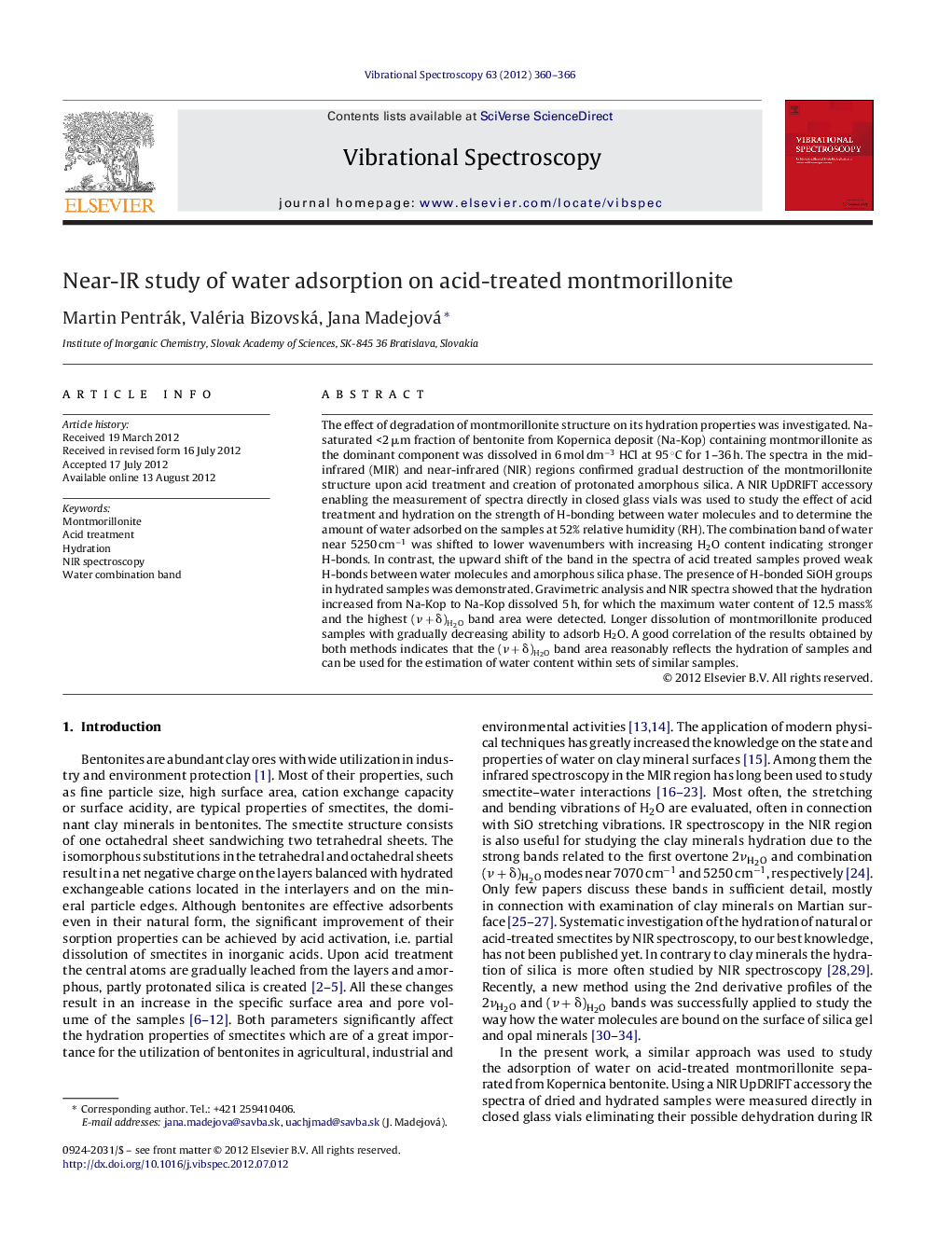| Article ID | Journal | Published Year | Pages | File Type |
|---|---|---|---|---|
| 1250433 | Vibrational Spectroscopy | 2012 | 7 Pages |
The effect of degradation of montmorillonite structure on its hydration properties was investigated. Na-saturated <2 μm fraction of bentonite from Kopernica deposit (Na-Kop) containing montmorillonite as the dominant component was dissolved in 6 mol dm−3 HCl at 95 °C for 1–36 h. The spectra in the mid-infrared (MIR) and near-infrared (NIR) regions confirmed gradual destruction of the montmorillonite structure upon acid treatment and creation of protonated amorphous silica. A NIR UpDRIFT accessory enabling the measurement of spectra directly in closed glass vials was used to study the effect of acid treatment and hydration on the strength of H-bonding between water molecules and to determine the amount of water adsorbed on the samples at 52% relative humidity (RH). The combination band of water near 5250 cm−1 was shifted to lower wavenumbers with increasing H2O content indicating stronger H-bonds. In contrast, the upward shift of the band in the spectra of acid treated samples proved weak H-bonds between water molecules and amorphous silica phase. The presence of H-bonded SiOH groups in hydrated samples was demonstrated. Gravimetric analysis and NIR spectra showed that the hydration increased from Na-Kop to Na-Kop dissolved 5 h, for which the maximum water content of 12.5 mass% and the highest (ν+δ)H2O band area were detected. Longer dissolution of montmorillonite produced samples with gradually decreasing ability to adsorb H2O. A good correlation of the results obtained by both methods indicates that the (ν+δ)H2O band area reasonably reflects the hydration of samples and can be used for the estimation of water content within sets of similar samples.
